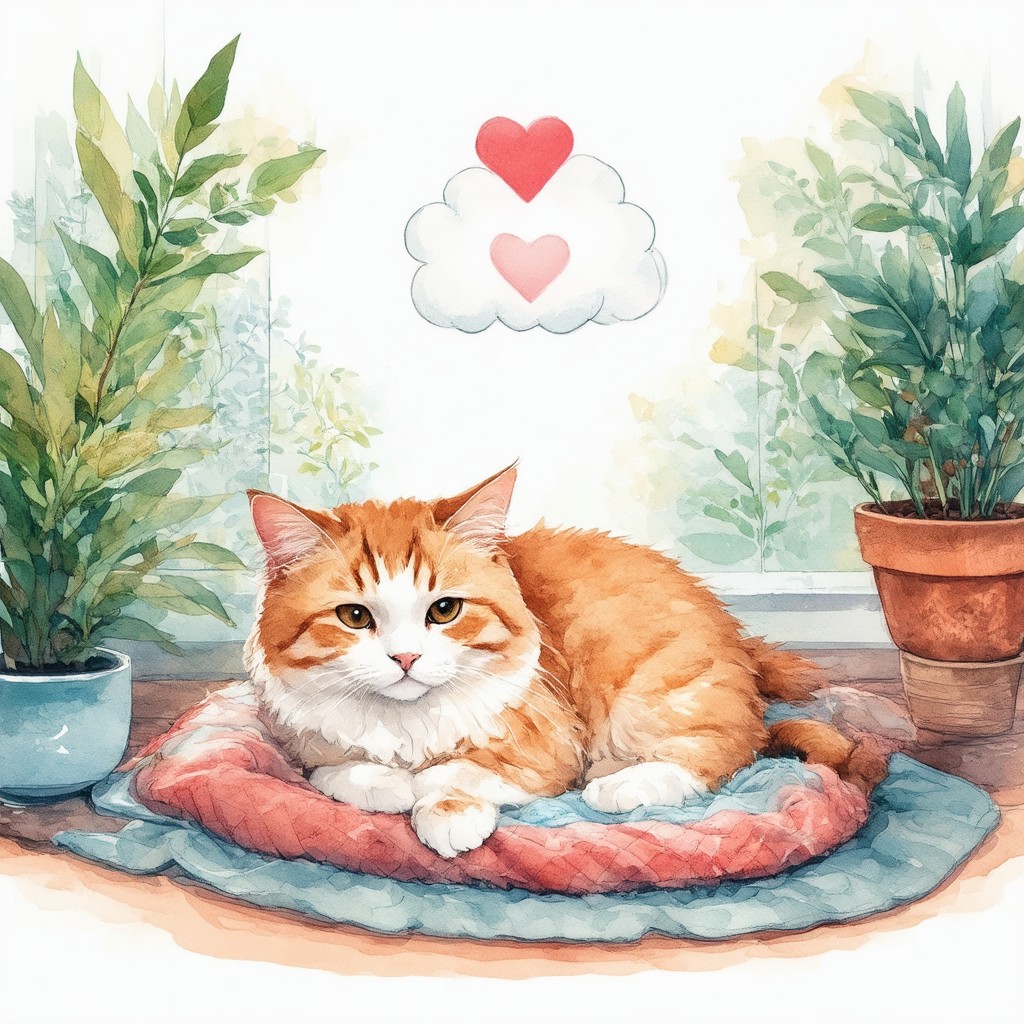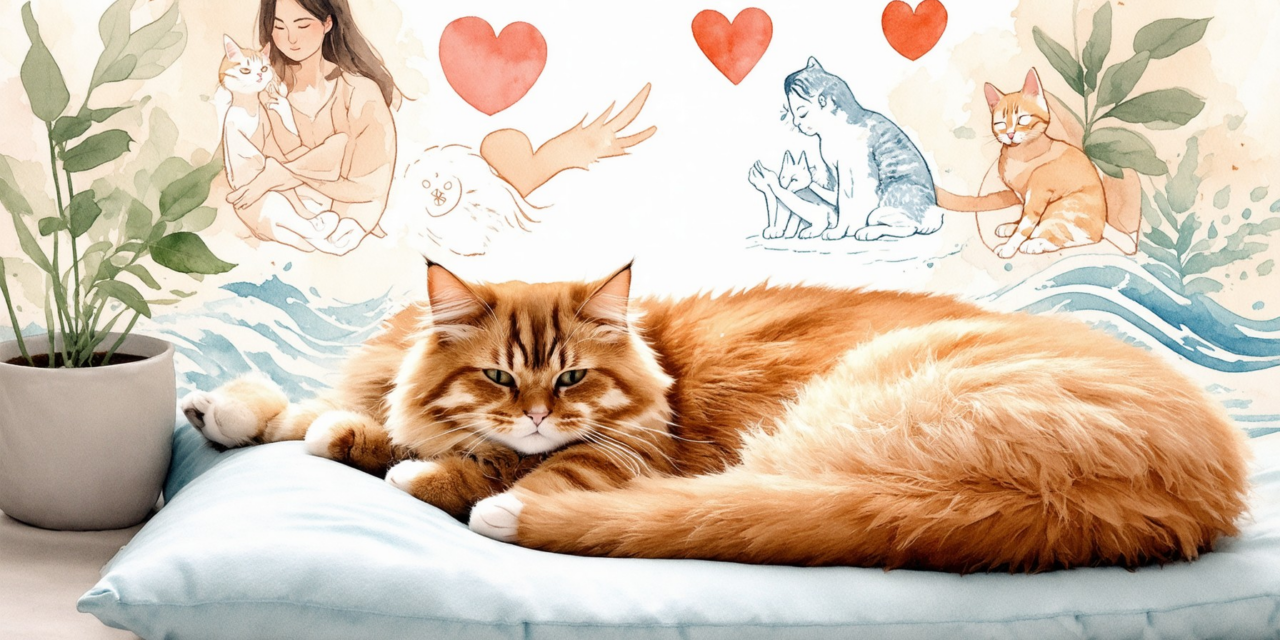Key Takeaways
- Emotional Wellness: Cat therapy enhances emotional wellness by providing companionship and reducing feelings of loneliness and anxiety.
- Stress Relief: Interacting with therapy cats lowers cortisol levels, leading to significant stress reduction and promoting relaxation.
- Social Engagement: Cat therapy encourages social interactions, helping individuals develop important social skills in nurturing environments.
- Physical Health Benefits: The calming presence of therapy cats can lower blood pressure and heart rates, contributing to overall physical health.
- 3 R’s of Cat Therapy: The principles of Rescue, Rehabilitate, and Rehome enhance the effectiveness of therapy for both cats and their human companions.
- Mindfulness Practice: Engaging with therapy cats promotes mindfulness, allowing individuals to focus on the present moment and reduce anxiety.
Welcome to our comprehensive exploration of cat therapy, a unique and heartwarming approach to emotional wellness that highlights the profound bond between humans and their feline companions. In this article, we will delve into the essence of cat therapy, uncovering its benefits and the pivotal role that cats play in enhancing mental health. From understanding how therapy cats alleviate stress and anxiety to exploring the significance of the 3 R’s in cat therapy, we will provide insights that resonate with both cat lovers and those seeking emotional support. Additionally, we will discuss the differences between traditional therapy methods and the innovative approach of incorporating cats in therapy, along with practical guidance on finding local cat therapy services and the steps to achieve therapy cat certification. Join us as we embark on this enlightening journey into the world of therapeutic cats and discover how they can transform lives through their calming presence and unconditional love.
What is cat therapy?
Understanding the concept of cat therapy
Cat therapy, also known as feline-assisted therapy, involves the use of cats to promote emotional wellness and improve mental health. This innovative approach leverages the unique bond between humans and cats to provide therapeutic benefits. The calming presence of a cat can help reduce stress, anxiety, and feelings of loneliness, making it an effective tool in various therapeutic settings. Many people find comfort in the soft purring and gentle companionship of a cat, which can significantly enhance their overall well-being.
The role of cats in emotional wellness
Cats play a vital role in emotional wellness by serving as therapy animals that provide unconditional love and support. Their presence can create a soothing environment, which is particularly beneficial for individuals dealing with mental health challenges. Research shows that interacting with cats can lead to lower cortisol levels, a hormone associated with stress, and increased production of oxytocin, often referred to as the “love hormone.” This biological response contributes to feelings of relaxation and happiness, making cats an excellent choice for therapy.
In addition to their calming effects, therapy cats can help individuals develop social skills and improve their emotional intelligence. Engaging with a cat encourages nurturing behaviors, which can be particularly helpful for those struggling with interpersonal relationships. For those interested in exploring the benefits of cat therapy, visiting a cat therapy cafe can provide a unique opportunity to experience these advantages firsthand.

What does cat therapy do?
Cat therapy offers a range of benefits that significantly enhance emotional and mental well-being for humans. Engaging with therapy cats can lead to improved mood, reduced stress levels, and a greater sense of companionship. The calming presence of these therapeutic cats can create a soothing environment, making them effective in various therapeutic settings.
Benefits of cat therapy for humans
- Emotional Support: Therapy cats provide unconditional love and companionship, which can alleviate feelings of loneliness and depression. Their affectionate nature often leads to increased emotional stability.
- Stress Reduction: Interacting with cats has been shown to lower cortisol levels, the hormone associated with stress. Spending time with a therapy cat can promote relaxation and a sense of calm.
- Social Interaction: Cat therapy encourages social engagement, especially in group settings like cat cafes. This interaction can help individuals develop social skills and build connections with others.
- Physical Health Benefits: The act of petting a cat can lower blood pressure and heart rate, contributing to overall physical health. The soothing effect of cat therapy can also enhance recovery in patients undergoing medical treatments.
How therapy cats help alleviate stress and anxiety
Therapy cats play a crucial role in alleviating stress and anxiety through their unique behaviors and interactions. Their presence can create a calming atmosphere, making them ideal companions for individuals facing emotional challenges. Here are some ways therapy cats contribute to stress relief:
- Calming Presence: The gentle purring of a cat can have a soothing effect, often referred to as calming music for cats. This natural sound can help lower anxiety levels and promote relaxation.
- Mindfulness and Focus: Engaging with a therapy cat encourages mindfulness, allowing individuals to focus on the present moment. This shift in attention can significantly reduce feelings of anxiety.
- Routine and Structure: Caring for a therapy cat can provide a sense of routine and purpose, which is beneficial for those struggling with anxiety. Establishing a daily routine around cat care can enhance feelings of stability.
- Non-Judgmental Companionship: Therapy cats offer a non-judgmental presence, allowing individuals to express their feelings freely. This supportive environment fosters emotional healing and resilience.
What are the 3 R’s of cat therapy?
The 3 R’s of cat therapy are essential components that facilitate emotional and behavioral healing in felines. Understanding these principles can enhance the effectiveness of therapeutic practices for cats.
The significance of the 3 R’s in cat therapy
1. Reformulation: This involves changing the way a cat perceives its environment or experiences. By introducing new stimuli or altering existing ones, therapists can help cats adapt to their surroundings, reducing anxiety and promoting a sense of security. Techniques may include gradual exposure to new environments or the use of calming music for cats to create a soothing atmosphere.
2. Recognition: This step emphasizes the importance of recognizing a cat’s emotional state and behavioral cues. By observing and interpreting these signals, caregivers can better understand the cat’s needs and tailor interventions accordingly. This recognition fosters a stronger bond between the cat and its owner, enhancing trust and cooperation during therapy. For more on how to enhance this bond, consider exploring therapeutic cats and their role in emotional support.
3. Revision: The final R focuses on revising the cat’s behavior through positive reinforcement and consistent training. This can involve modifying undesirable behaviors by rewarding positive actions, thereby encouraging a healthier emotional state. Techniques such as clicker training or interactive play can be effective in this process. For insights on effective training methods, check out training a therapy cat.
How the 3 R’s enhance the effectiveness of therapy
Incorporating the 3 R’s into cat therapy not only aids in behavioral modification but also contributes to the overall well-being of the animal. By reformulating their environment, recognizing their emotional needs, and revising their behaviors, therapists can create a comprehensive approach that promotes healing and comfort. This holistic method aligns with the growing recognition of therapy animals as vital components in emotional wellness.
For further insights into animal therapy and wellness, resources such as the Humane Society provide valuable information and guidelines.
What are the 3 R’s of cat therapy?
The 3 R’s of cat therapy—Rescue, Rehabilitate, and Rehome—play a crucial role in enhancing the effectiveness of therapy for both cats and humans. Understanding these principles can deepen our appreciation for how therapy cats contribute to emotional wellness and mental health.
The significance of the 3 R’s in cat therapy
The first R, Rescue, emphasizes the importance of saving cats from shelters or difficult situations. Many therapy cats come from backgrounds where they faced neglect or abandonment. By rescuing these animals, we not only provide them with a loving home but also give them a chance to thrive as therapy animals. This process can be incredibly rewarding for both the cat and the human involved.
The second R, Rehabilitate, focuses on the training and socialization of therapy cats. This stage is essential for ensuring that the cats are comfortable in various environments and can interact positively with people. Techniques such as training a therapy cat and using calming music for cats can help ease anxiety and prepare them for their roles. A well-rehabilitated cat is more likely to succeed in therapy settings, providing the emotional support that individuals need.
Finally, the third R, Rehome, highlights the importance of finding suitable environments for therapy cats. This can involve placing them in cat therapy cafes or with individuals who can benefit from their companionship. The cat therapy cafe concept has gained popularity, allowing people to experience the calming effects of therapy cats in a social setting.
How the 3 R’s enhance the effectiveness of therapy
By adhering to the 3 R’s, we can significantly enhance the effectiveness of therapy involving cats. Each principle contributes to creating a supportive environment where both the cat and the human can flourish. For instance, a certified therapy cat that has been rescued and rehabilitated is more likely to exhibit the calm demeanor necessary for therapy sessions. This not only benefits the individuals receiving therapy but also promotes the overall well-being of the cats involved.
Moreover, the emotional bond formed through the 3 R’s fosters a deeper connection between the cat and its human counterpart. This bond is vital in therapy, as it allows for a more profound emotional exchange, ultimately leading to improved mental health outcomes. As we continue to explore the benefits of cat therapy, understanding and implementing the 3 R’s will remain essential in maximizing the positive impacts of these therapeutic relationships.

What is the difference between CBT and cat therapy?
Understanding the differences between Cognitive Behavioral Therapy (CBT) and cat therapy is essential for those exploring various therapeutic options. While CBT focuses on altering negative thought patterns and behaviors through structured sessions, cat therapy integrates the calming presence of cats to enhance emotional well-being. This unique approach allows individuals to experience the therapeutic benefits of feline companionship, which can significantly complement traditional therapeutic methods.
Comparing cognitive behavioral therapy and cat therapy
CBT typically involves a structured approach lasting between 16 to 24 weekly sessions, with each session lasting about 50 minutes. This method emphasizes identifying and changing unhelpful cognitive distortions and behaviors. In contrast, cat therapy utilizes the natural instincts and behaviors of cats to provide comfort and emotional support. The presence of a therapy cat can create a soothing environment, helping individuals feel more relaxed and open during their sessions.
The unique benefits of incorporating cats in therapy sessions
Incorporating cats into therapy sessions offers several unique benefits:
- Emotional Support: Cats provide unconditional love and companionship, which can help reduce feelings of loneliness and anxiety.
- Stress Relief: Interacting with cats can lower stress levels, making it easier for individuals to engage in therapeutic processes.
- Enhanced Engagement: The playful nature of cats can encourage participation and openness, making therapy sessions more enjoyable.
- Calming Effects: The presence of a cat can create a serene atmosphere, allowing individuals to focus on their feelings and experiences. Listening to calming music for cats during sessions can further enhance this effect.
Overall, the integration of cats in therapy not only enriches the therapeutic experience but also promotes a holistic approach to emotional wellness, making it a valuable option for those seeking support.
How long does cat therapy last?
Understanding the duration of cat therapy sessions is essential for anyone considering this unique form of emotional support. Typically, cat therapy sessions last between 30 to 60 minutes, depending on the specific needs of the individual and the setting in which the therapy is conducted. Factors such as the therapist’s approach, the cat’s temperament, and the client’s comfort level can influence the length of each session.
Typical duration of cat therapy sessions
Most therapy cat sessions are structured to provide ample time for interaction between the client and the cat. Sessions often begin with a brief introduction to the therapy cat, allowing clients to acclimate to the animal’s presence. Following this, the therapist may guide the client in engaging with the cat through petting, playing, or simply enjoying the calming presence of the animal. This interaction is crucial for fostering emotional connections and enhancing the therapeutic experience.
Factors influencing the length of therapy
Several factors can affect how long cat therapy lasts:
- Client Needs: Some individuals may require longer sessions to fully engage with the therapy cat, especially if they are dealing with significant emotional distress.
- Cat’s Comfort: The therapy cat’s comfort and energy levels are also important. If the cat shows signs of fatigue or stress, the session may be shortened to ensure the well-being of the animal.
- Therapeutic Goals: The specific goals of the therapy can dictate session length. For instance, if a client is working through complex emotional issues, longer sessions may be beneficial.
For those interested in exploring local options, searching for cat therapy near me can yield various resources, including cat cafes that offer therapeutic interactions with cats in a relaxed environment.
What is the goodbye letter in cat?
The concept of a goodbye letter in cat therapy serves as a poignant tool for emotional closure, both for the pet and the owner. This letter is often written by the owner to express their feelings about the bond shared with their cat, especially during times of transition, such as when a cat is nearing the end of its life or when it is being rehomed. The act of writing a goodbye letter allows owners to articulate their love and appreciation for their feline companions, helping to process grief and loss.
Understanding the goodbye letter concept in cat therapy
A goodbye letter can be a therapeutic exercise that encourages reflection on the joyful moments spent with the cat. It often includes cat therapy benefits, highlighting how the cat has positively impacted the owner’s life. This practice not only aids in emotional healing but also reinforces the bond between the owner and the cat, making it a significant aspect of the therapeutic process.
Emotional closure and its importance in therapy
Emotional closure is crucial in therapy, as it allows individuals to move forward after a significant loss. Writing a goodbye letter can facilitate this process by providing a structured way to express feelings of love, sadness, and gratitude. It serves as a personal ritual that can help owners honor their cats and acknowledge the role they played in their lives. This practice is particularly beneficial in cat therapy settings, where the focus is on emotional wellness and the healing power of the human-animal bond.













